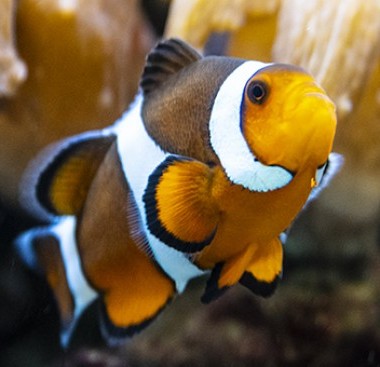Feds Drop 29 Species From ESA
A success? Or correction of errors?
By: Staff Date: 06/30/1998 Category: | Animal Legislation | Wildlife Journal |
With a pair of Bald Eagles and their chick in the background, Interior Secretary Bruce Babbitt announced that the federal government will drop 29 species from the Endangered Species Act list of protected species at a May 5 press conference.
"Our new policy to emphasize delisting could alter the terms of debate over the future of the landmark 1973 conservation law," Babbitt told those assembled at Barton Grove Campground in Gill, Massachusetts, "for we can now finally prove one thing conclusively: the Endangered Species Act works. Period."
The move comes as Congress debates the reauthorization of the law and the administration endeavors to counter complaints that once a species enters the list, it is likely to be there forever. Four of the 29 species were among the 16 petitioned for deletion by the National Wilderness Institute in early 1997.
The controversy
The Endangered Species Act was approved in 1973 and now contains more than 1400 species and subspecies of plants and animals - many of them foreign species - protected by the federal government, with dozens of additional species on a waiting list for inclusion. Only 27 species have been removed from the list; the last to be dropped was the Bidens cuneate, a composite family plant deleted in February 1996 after scientists revised its taxonomic description.
Once a species is listed, the FWS or the National Marine Fisheries Service must write and implement a recovery plan. According to FWS, many species are still awaiting recovery plans.
According to NWI, many of the previous species deleted from the list never should have been placed there in the first place. In its petition to remove the Hawaiian hawk - one of the species' in Babbitt's announcement - from the list, NWI executive director Rob Gordon wrote:
"This bird, according to US FWS's own documents, faces no significant identifiable threats and has had a stable population which has been at or near the carrying capacity of its range for the entire period it has been included on the List of Endangered and Threatened Wildlife and Plants.
"Although the USFWS has listed the Hawaiian hawk in budget justifications as early as FY92 as being a candidate for delisting, it remains on the endangered species list. According to USFWS 1992 budget justification, 'the endangered Hawaiian hawk appears to be stable. The service is considering preparing a delisting package.'
"According to USFWS's species by species expenditure reports, in just the three-year period following USFWS's recognition that the hawk did not merit inclusion on the list, $458,600 taxpayer dollars, including $32,000 from the US Forest Service, were spent on this species."
Another year of budgeting for the Hawaiian hawk has passed since the NWI petition.
NWI's petition to drop the island night lizard from the ESA cites a lack of evidence that the population on California's Channel Islands was ever in decline. The petition to drop the Tinian monarch, a bird indigenous to the Marianas Islands, said that the species was listed in error, has maintained its population at or near carrying capacity of its habitat throughout its inclusion on the list, and is the second most common bird on the island. The petition for the Truckee barberry stated that the plant is no longer considered a separate species and therefore should not be included on the list. That petition cited the precedent for dropping species when taxonomic revisions were made.
Previous deleted species
In his 1995 paper on biodiversity in The True State of the Planet, Stephan R. Edwards PhD ecologist with the International Union for the Conservation of Nature and Natural Resources, wrote: "If a species is threatened, the listing of it should trigger remedial actions to correct or remove the causes of the threats. This is not what happens. Since 1973, only 23 species have been removed from the list: eight were listed in error, a court invalidated the listing of one; seven recovered, and seven went extinct. In other words, there is an equal probability that a species listed on the Endangered Species Act will recover or go extinct."
Of the 27 species previously dropped from the endangered species list (four more since Edwards' statement), USFWS notes scientific revision as the primary reason for delisting the Mexican duck, the purple-spined hedgehog cactus, the spineless hedgehog cactus, and the Bidens cuneate.
Seven species - the Tecopa pupfish, cisco longjaw (Coregonus alpenae, a whitefish), blue pike, Santa Barbara song sparrow, Sampson's pearly mussel, Gambusia amistad (a mosquito fish), and dusky seaside sparrow - were dropped because they became (or were already) extinct.
The Indian flap-shelled turtle was dropped when better data about its population was reported and the pine barrens tree frog, Mckittrick pennyroyal (a plant), and Tumamoc globeberry (a plant) were dropped when additional populations were discovered.
Three species - the Palau dove, Palau fantail, and the Palau owl, all residents of a western Pacific island - were dropped as "recovered" when new populations were found. NWI challenges that designation, citing population estimation errors in listing them in the first place.
The Bahama swallowtail butterfly was dropped when the ESA was amended.
The remaining species itemized as recovered may have been errors in listing or completely unrelated to their inclusion on the list according to NWI. These are:
- Eastern brown pelican, Atlantic coast and Gulf coast populations;
- American alligator;
- Rydberg milk-vetch (a plant);
- Gray whale;
- Arctic peregrine falcon;
- Eastern Gray Kangaroo;
- Red kangaroo; and
- Western gray kangaroo
The kangaroos were included on the list as part of USFWS response to Australian policies and removed at the request of the Australian government.
According to NWI, the gray whale was recovering before it was listed; the alligator and the milk-vetch may have been listed as a result of population estimate error; and the falcon was a beneficiary of the ban on the insecticide DDT.
Species scheduled to graduate from the Endangered Species Act list
Birds
- America peregrine falcon (North America)
- Bald eagle (lower 48 states)
- Aleutian Canada goose (Alaska, Canada, California, Washington, & Oregon)
- Tinian monarch (Northern Marianas Islands)
- Guam broadbill (Guam)
- Mariana mallard (Northern Marianas Islands)
- Hawaiian hawk (Hawaii)
- Brown pelican (Gulf coast states)
Mammals
- Columbia white-tailed deer (Washington & Oregon)
- Gray timber wolf (Minnesota, Michigan, Wisconsin)
- Dismal Swamp southeastern shrew (Virginia, North Carolina)
- Northern Virginia flying squirrel (Virginia, West Virginia)
Fish
- Ash Meadows amargosa pupfish (Nevada)
- Tidewater goby (California)
- Pahrump poolfish (Nevada)
- Mollusk
- Oahu tree snails (Hawaii)
Reptile
- Island night lizard (California)
Plants
- Running buffalo clover (Indiana, Kansas, Kentucky, Missouri, Ohio, & West Virginia)
- Hoover's wooly-star (California)
- Truckee barberry (California)
- Three Ash Meadows plant (Nevada)
- Eureka Valley plants (2) (California)
- Chamaesyce skottsbergii (variation kalaeloana) (Hawaii)
- Loch Lomond coyote-thistle (California)
- Lloyd's hedgehog cactus (New Mexico, Texas)
- Virginia roundleaf birch (Virginia)
- Robbin's cinquefoil (New Hampshire, Vermont)
- Heliotrope milk-vetch (Utah)
- Missouri bladder-pod (Missouri)
About The Author
All Authors Of This Article: | Norma Bennett Woolf |












